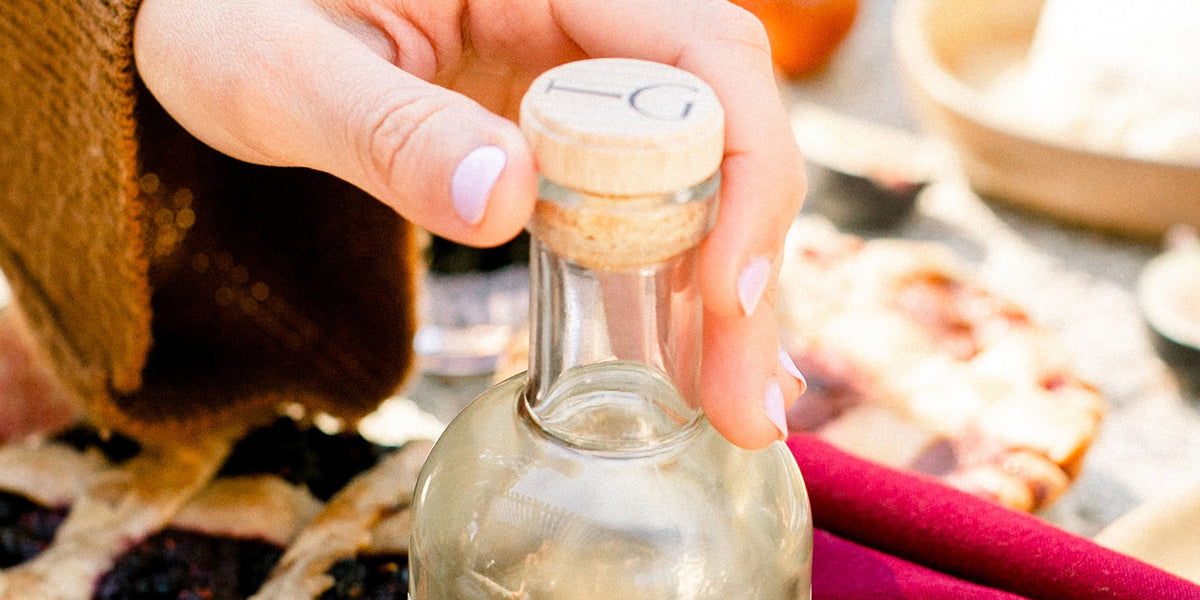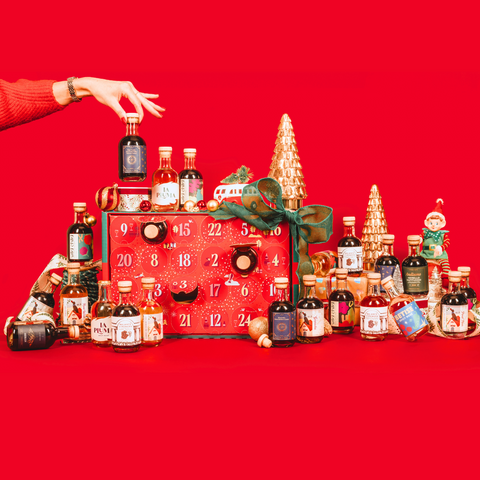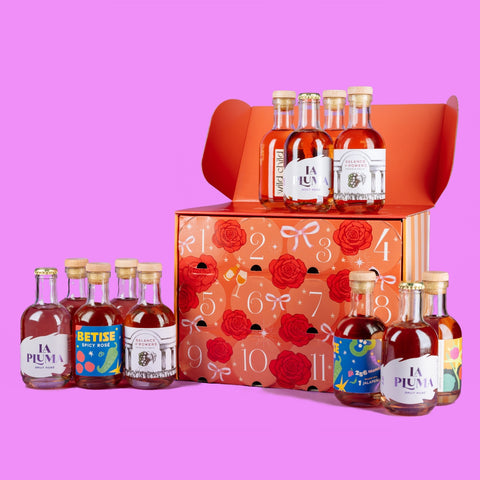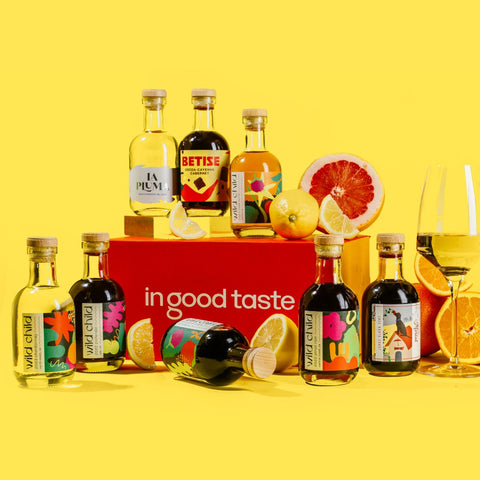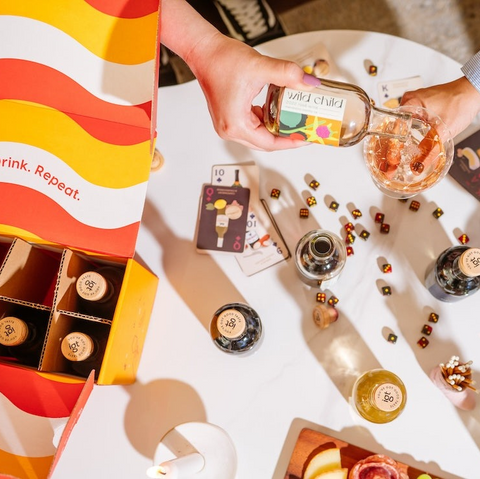Chardonnay - A Rite of Passage
Considered a “rite of passage” for new winemakers in burgeoning regions, Chardonnay is beloved by winemakers, tasters, and grape farmers alike. It’s popular for flavor notes like papaya, vanilla, oak, pineapple, and even apple and lemon. Since its taste can vary depending on where it’s made, we’ll introduce you to Chardonnay’s long history, origins, and top regions of production. We’ll even share some tips to help you enjoy it for yourself.
History of Chardonnay
There are several theories on the origin of Chardonnay. With multiple regions fighting over their claim to the wine’s past. The name comes from the Hebrew phrase “Sha’har Adonai,” which means “gate of God.” According to the Mishna, golden grapes were placed above the temple gate’s door in Jerusalem, thus associating the grape with the gate of God.

While some theories claimed the grape came from the Middle East, Cyprus, or Croatia, the most consistent story traces its origin back to the Burgundy region of France.
Today, Chardonnay grapes are regularly grown and pressed in diverse locations around the world, from California to England to New Zealand.
Is Chardonnay a Varietal Wine or Wine Blend?
Chardonnay is popular as a varietal wine, but the grape’s neutral nature makes it so versatile that it is commonly found in complex blends as well. Some common white wine blends feature delicious mixtures of Chardonnay, Sauvignon Blanc, Sémillon, Chenin Blanc, and others.

The Taste of Chardonnay
The taste of Chardonnay heavily depends on how it’s stored or aged. If aged in a stainless steel barrel, it’s likely to have a fruitier, less oaky or toasty flavor. Chardonnay aged with this method is referred to as unoaked.
When stored in new oak barrels, Chardonnay will take on an oaky flavor, whereas a toasty quality comes from aging in an oak barrel for a longer period.
In general, unoaked Chardonnay makes for a dry white wine with a zippy flavor similar to Sauvignon Blanc—but with a heavier mouthfeel, and without the “grassy” notes. Oaked Chardonnay comes in full-bodied flavors such as butter, baking spices, or vanilla.
Chardonnay Around the World
Because the Chardonnay grape is neutral, its flavor can be highly affected by its region’s soil and climate. Wine experts refer to this type of grape as “terroir-expressive,” a term used to describe wines like Chardonnay that developed unique flavor profiles based on their surroundings.
If the Chardonnay grape is grown in a warm climate, its wine takes on more tropical flavors. If the grape comes from cooler climates, its taste leans toward green apple and citrus. Because there are so many ways to make Chardonnay wine and the grape is so terroir-expressive, you’ll probably never have the exact same sip of Chardonnay twice. (Cheers to new flavor experiences!)
Grapes picked at different ripeness levels can also determine the final flavor of Chardonnay. Chardonnay produced from very ripe grapes will make a sweeter glass of wine, and Chardonnay made from grapes picked before their peak ripeness will usually turn out drier.
Old World Chardonnay (from Europe, Africa, or Asia) is often described as lighter in alcohol with a subtle earthiness. In contrast, New World Chardonnay (North, Central, and South Americas) often boasts higher alcohol levels and fruitier taste overall.
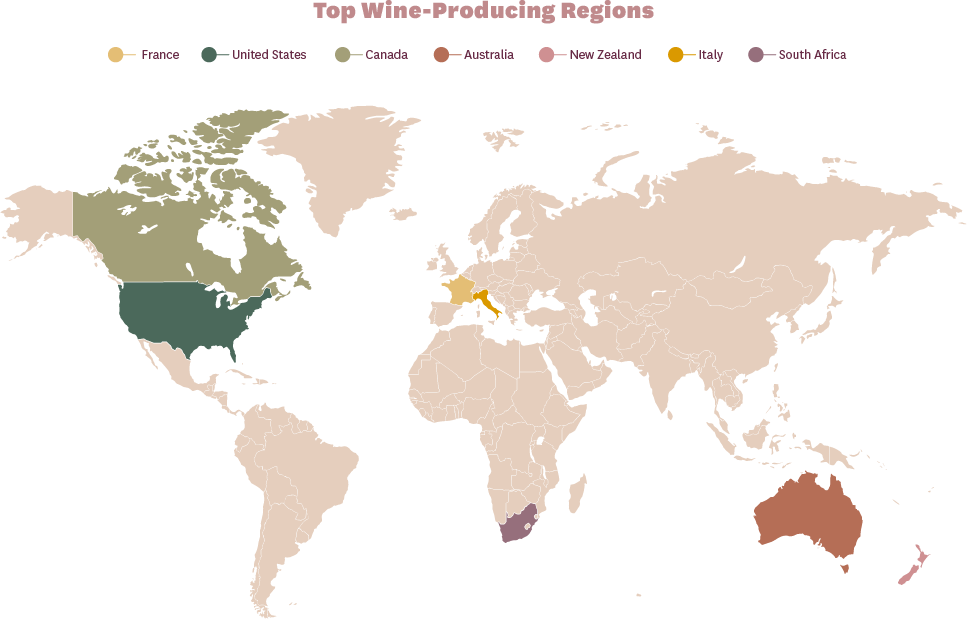
Today, the most popular wine-producing regions are as follows:
-
Burgundy, Chablis, Champagne, and other areas in France
-
California and New York in the US
-
Canada
-
Australia
-
New Zealand
-
Italy
-
South Africa
Chardonnay Storing and Serving
Chardonnay is best when it’s chilled between 55 to 60 degrees Fahrenheit to preserve its fruity and citrus flavors. Two hours in the refrigerator is sufficient, but it should not be left there for long-term storage. If you’re stocking up for a while, keep your Chardonnay in a specialized wine refrigerator or a cool, dark space.
Like most white wines, Chardonnay is best served in a white wine glass or universal glass with a longer stem and narrower bowl. This shape guides the fruity aromas to the top of the glass for a nice whiff before sipping.
How to Drink Chardonnay
To properly sip your Chardonnay, follow the See. Swirl. Smell. Sip. Savor method.
See. If you’re at a restaurant, verify your Chardonnay’s label and vintage are correct. Next, note the clarity and color of your wine to ensure it’s not cloudy. A clear wine is what you’re looking for, as cloudiness may indicate something went wrong in the winemaking process.
Swirl. Give your glass a little swirl. Swirling the wine aerates it and opens up the aromas, making smells more robust and easier to identify.
Smell. Lean in and take a nice whiff of your Chardonnay. See if you can identify what you’re smelling. Is it fruity aromas, spices, floral notes, or anything that smells unpleasant? If it smells moldy or vinegary, something may be off.
Sip. Take a small but adequate sip, swish it a little to allow the Chardonnay to coat your taste buds and linger for a moment, then swallow.
Savor. Think about the first sip, what you tasted, and if anything delightfully surprised you about Chardonnay. Then, take the next sip and enjoy the delicious process all over again!
What to Pair with Chardonnay
Depending on the Chardonnay you’re drinking, you’ll likely have a few excellent options for pairings. The easiest way to decide which food to enjoy is to base your selection on the body of the wine.
Light body: Delicate seafood and fresh cheese or brie pair nicely.
Medium body: Pork tenderloin, poultry, or aged cheeses such as Blue Cheese will be a tasty pair.
Full body: Rich cream sauce and salmon or grilled meats make a perfect match.


